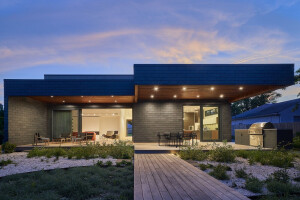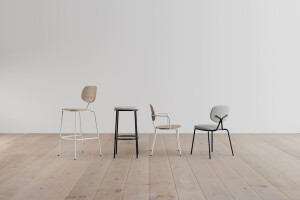The Lady Cilento Children's Hospital was completed in November 2014. Designed in joint venture by Conrad Gargett Lyons. Its innovative and colourful design incorporates leading edge diagnostic and treatment facilities which provide specialist health services for children. The client's brief was for a welcoming, bright and supportive environment for young patients and their families. The design process began with research into the typology of the modern hospital. The project was an opportunity to contest prevailing functionalist and medico-centric models, to radically rethink the care model and design a building which would act as a touchstone for the local community.
The hospital's colourful exterior incorporates the variegated greens and purples of the Bougainvillea plantings of the adjacent parklands. Its massing presents a sculpted building form incorporating green spaces and landscaped green roofs. The design concept is of a 'living tree'. Double height spaces (branches) radiate from two vertical atria (trunks) in the centre of the plan. These extend to the street to form framing portals and balconies and the branches also bring light and air into the building. Each branch is oriented toward a landmark to provide orientation for users within the building.
Colour, natural materials and two and three-dimensional art are used extensively in the building to promote patient wellbeing, providing engaging distractions for young patients. This use of colour supports the three dimensional planning concept and contributes to intuitive wayfinding through the building with the aim of providing reassurance and reducing stress. The design of the Lady Cilento Children’s Hospital is characterised by its engagement with a range of issues which expand the briefing agenda and embrace opportunities in a wider context. These include responses to the urban environment, the hospital as a public building and the contribution of hospitals to the promotion of health.
The design embraces the promotion of well-being, of its patients, users and staff; and extending to the public and community. The design concept is underpinned by a striving for coherence, reducing stress and anxiety; connection to nature by the blurring of the definition of inside and outside and the role of the project in its context, promoting a healthier community by cultural engagement and urban renewal. The building provides a positive, rich and stimulating architectural experience, incorporating landscape, maximizing daylight and views, and facilitating wayfinding. Brightly coloured parrots inhabit the vertical space of the central atrium and images of colourful butterflies, beetles and insects are printed on to timber panels which line the building’s public spaces, all part of the vibrant art program, The focus is on legibility and connection with public spaces, connected to landscape at all levels.





































